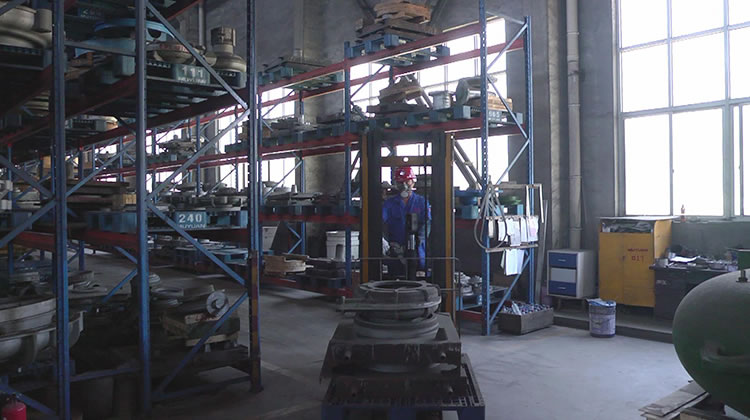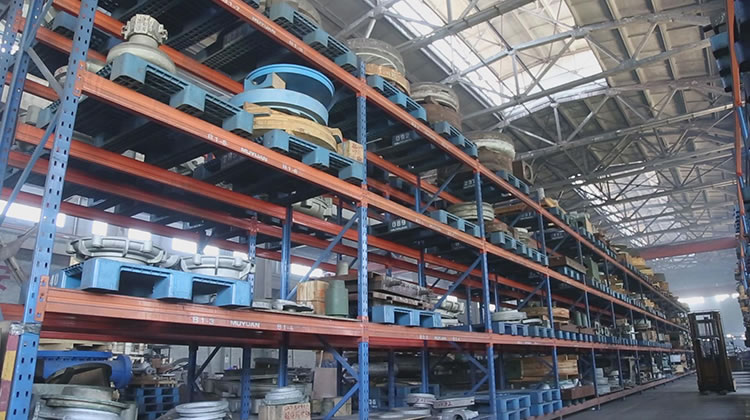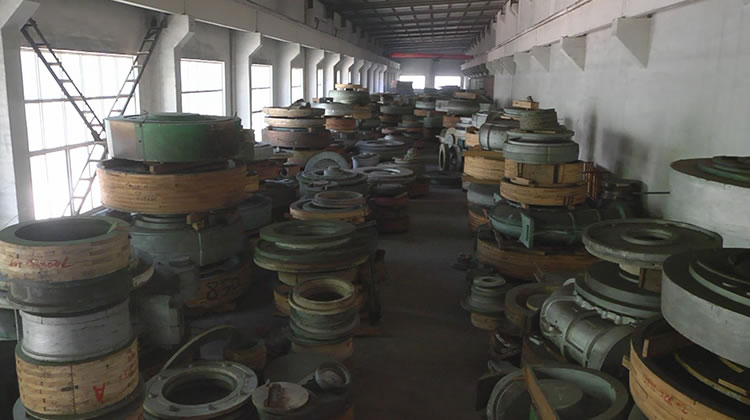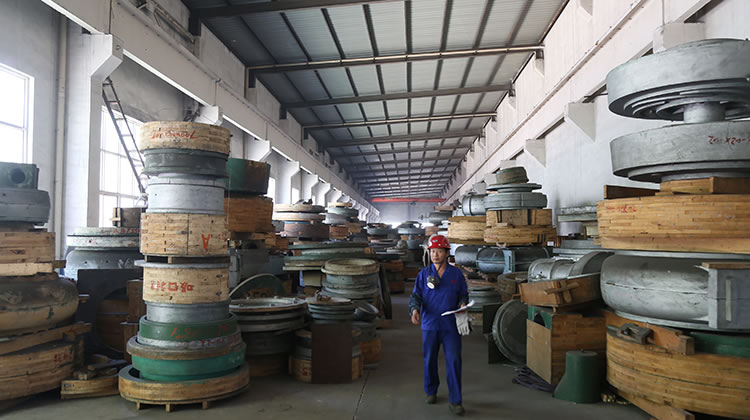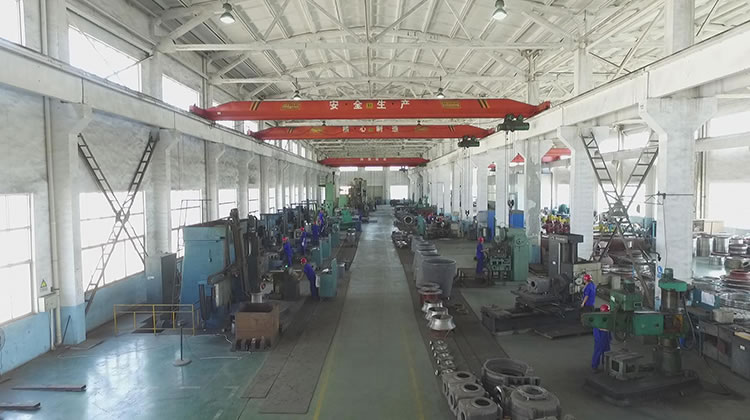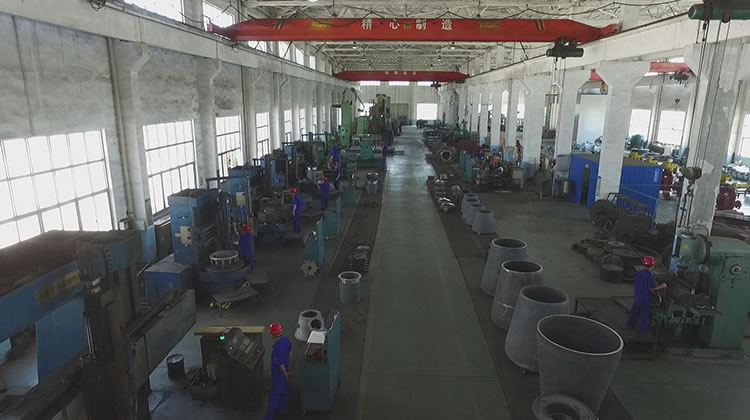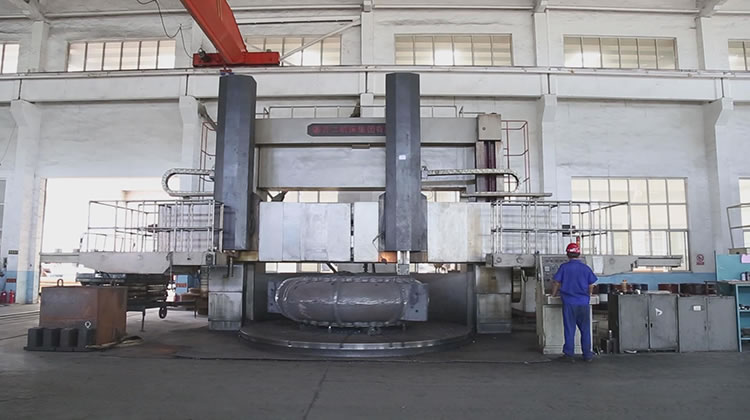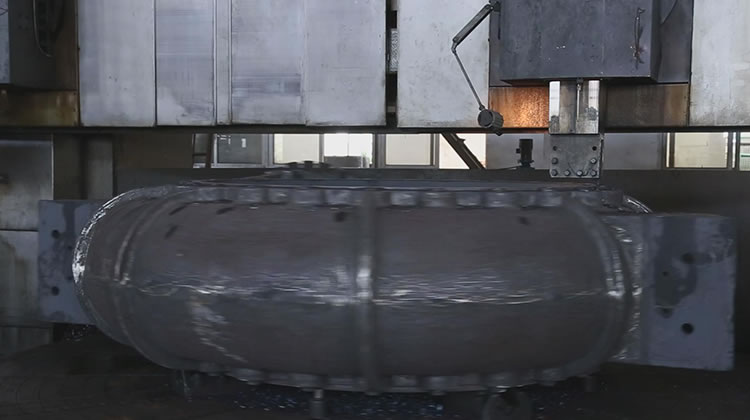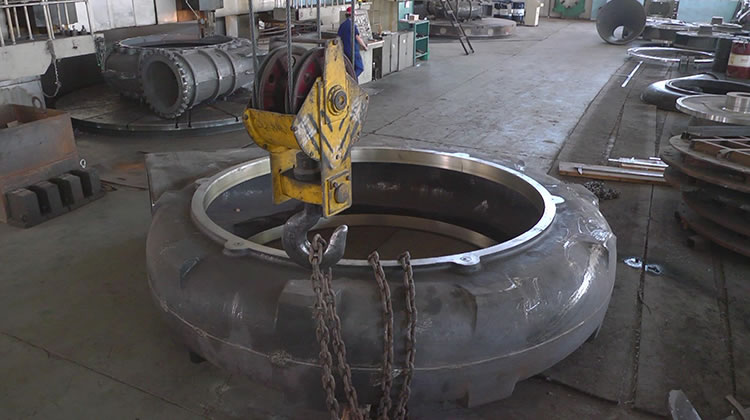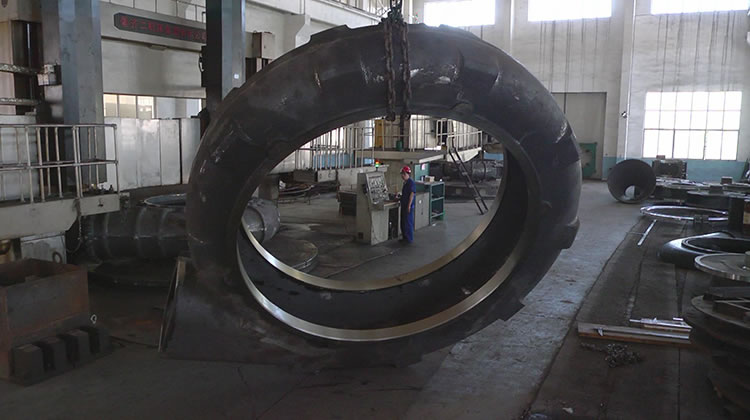Manufacturing
The casting workshop is equipped with a fully automatic resin sand regeneration line, mobile sand mixing machine and eight medium-frequency induction furnaces. It supports a maximum casting capacity of up to 20 tons, and the monthly production capacity reaches 600 tons. With the utilization of a complete range of mold base, we can produce a vast variety of large and small industrial pump castings. The automation of this workspace provides excellent production efficiency.
Our heat treatment furnace features a volume of up to 60 cubic meters. It operates under the fully automatic control of a computer system, which vastly improves the precision of product components.
The machining workshop houses a wide collection of large- and medium-sized lathes which process components in a variety of diameters and heights. Seen here is the dust-free rotor workshop. Bearings are all assembled in a dust-free environment, thus ensuring the bearings operate smoothly and stably. The pass rate for rotor assembly approaches 100%.
Last but not least, we carry out more than 20 diverse quality control tests in production. By collaborating with Tsinghua University, the School of Materials of the Hebei University of Science and Technology, and the Fluid Mechanics Research Center of Jiangsu University, we have assembled a team of over 100 R&D personnel who conduct research on the pump products’ performance, provide test analysis, design improvement as well as developing special materials and innovations in other fields.
The casting workshop is equipped with a large mobile sand mixer and three medium-frequency electric furnaces. The complete production system combined with a full range of machines has laid the basis for follow-up equipment processing.
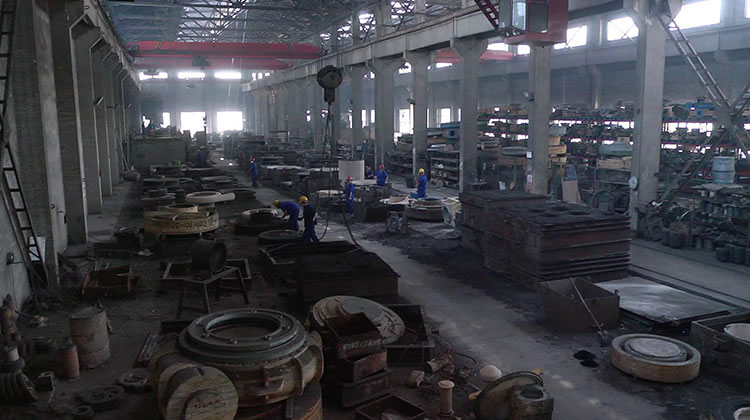 Workshop interior
Workshop interior
Our factory uses top-grade ferrochrome raw material which needs to comply with the GB5683-87 standard. Additionally, we ask the supplier to show us the product quality certificate.
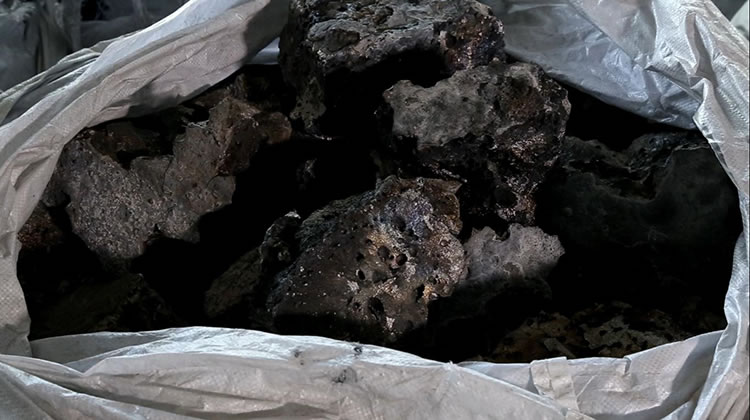 Raw material
Raw material
Our factory owns an immaculate lost foam production line. When compared to the traditional casting technology, the lost foam casting line can offer a great number of advantages. For example:
1. The casting possesses good quality and requires low cost.
2. The material is not restricted and comes in all sizes.
3. High dimensional accuracy
4. The smooth surface requires less-frequent cleaning and eliminates the need for machining.
5. Dense structure and greatly-reduced internal defects
6. Large-scale and large-batch production can be realized. The automatic production line is friendly to the environment.
7. Greatly-improved operating environment, less labor intensity and reduced energy consumption
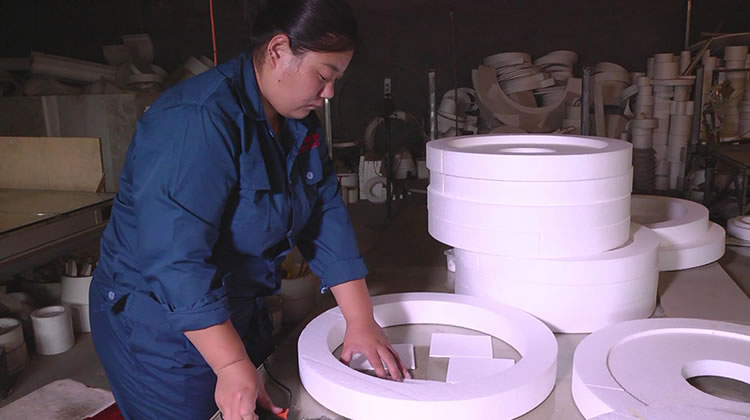 Lost foam manufacturing
Lost foam manufacturing 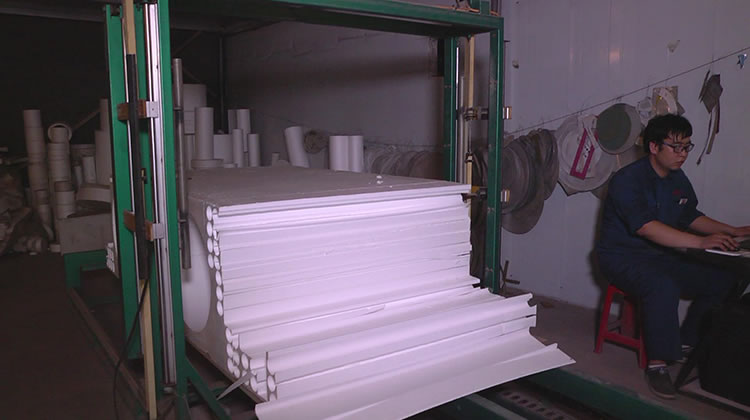 Lost foam production line
Lost foam production line
The large mobile sand mixing machine is able to produce approximately 30 tons of sand per hour, which helps to improve the production capacity and production efficiency.
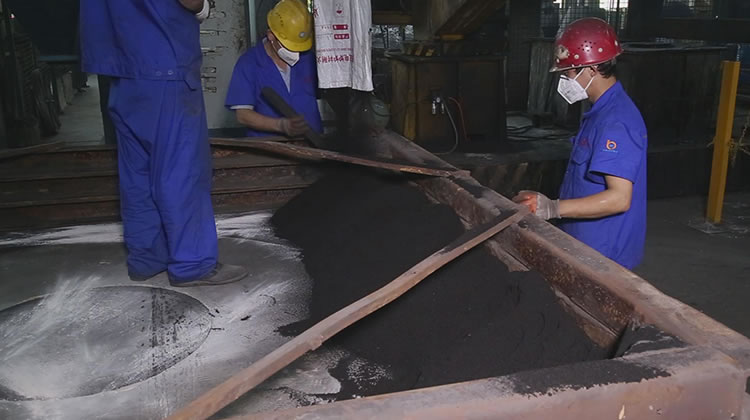 Sand mixer
Sand mixer 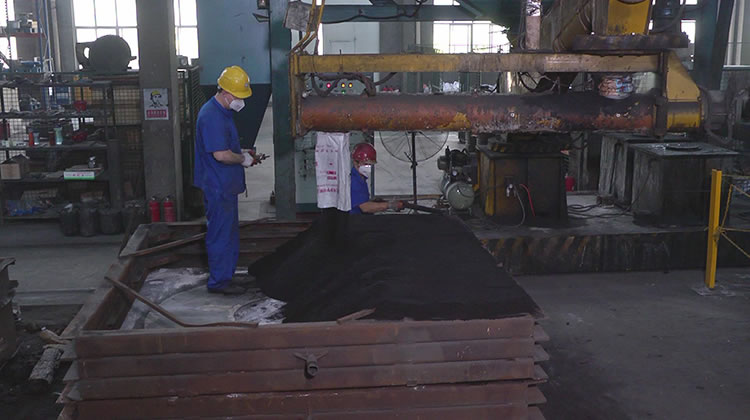 A close-up view of the sand mixer
A close-up view of the sand mixer
These three medium-frequency electric furnaces have capacities of 1 ton, 5 tons and 8 tons respectively. Before running the furnace, we need to check out the thickness of furnace wall, furnace bottom and furnace mouth. Then we add steel and high-chrome alloy to the furnace in sequence. After that, we check whether the water system and power system are kept in perfect conditions. Run the electric furnace, and add raw materials as the temperature rises. After melting is done, we need to carry out a sampling inspection. Those qualified workpieces can be taken out of the furnace. We can produce the blank piece in a maximum weight of 15 tons. The maximum weight of finished products reaches 13 tons, and the monthly production capacity is up to 280 tons.
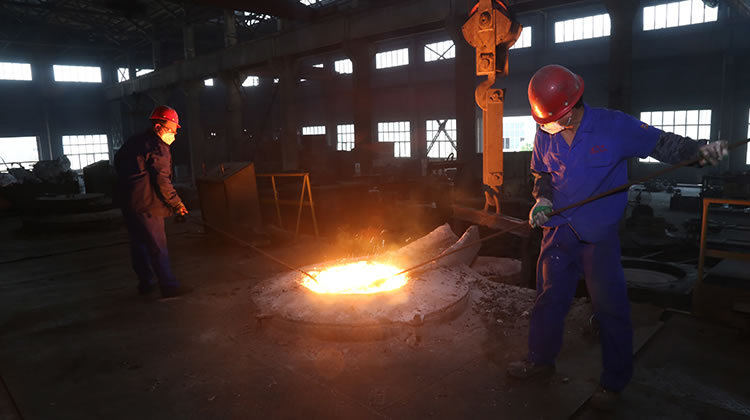 Medium-frequency furnace
Medium-frequency furnace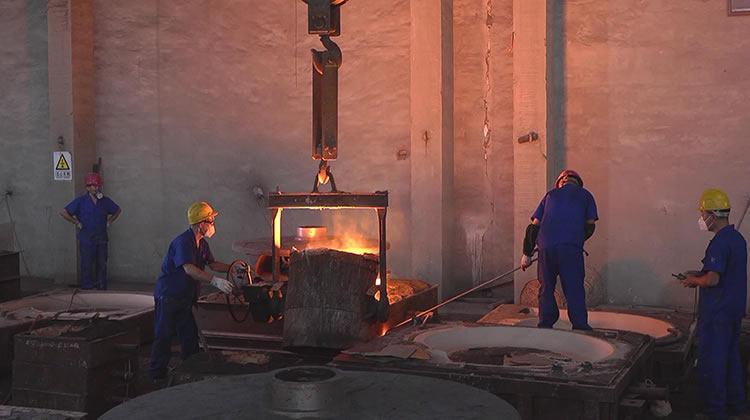 The medium-frequency furnace was pouring the slurry.
The medium-frequency furnace was pouring the slurry.
The purpose of applying the coating is to improve the fire resistance and smoothness of the surface of the sand mold, thus helping to eliminate casting defects and increase pas rate.
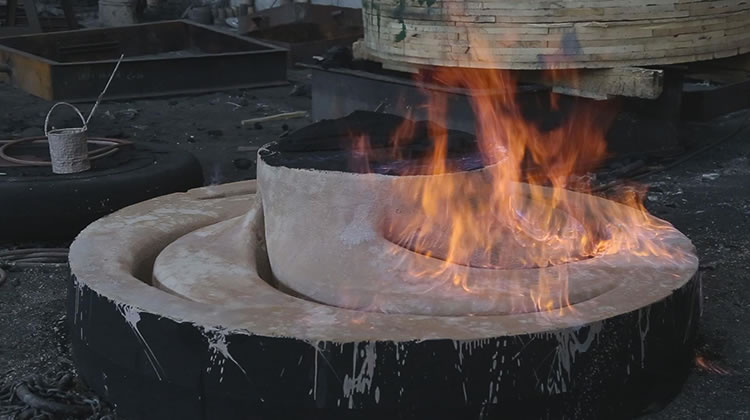 Coating operation
Coating operation
Tool library
Our tool library spans an area of approximately 4,200 square meters. It houses a full range of tools which can produce a huge variety of pumps.
Our company adopts unique technique to produce most of the small castings, which contributes to a significant increase in production efficiency.
In this workshop, the heat treat furnace has a volume of 60 cubic meters. We have a total of three heat treat furnaces, including two small furnaces with dimension of 3700*2000*1000mm and a large furnace with dimension of 5100*4600*1560mm. It takes at most 20 minutes (normally less than 15 minutes) to take the component of our product out of the high-performance furnace. A computer system is used to monitor the process in a fully automated mode. We are the first in China to apply this system to our furnace.
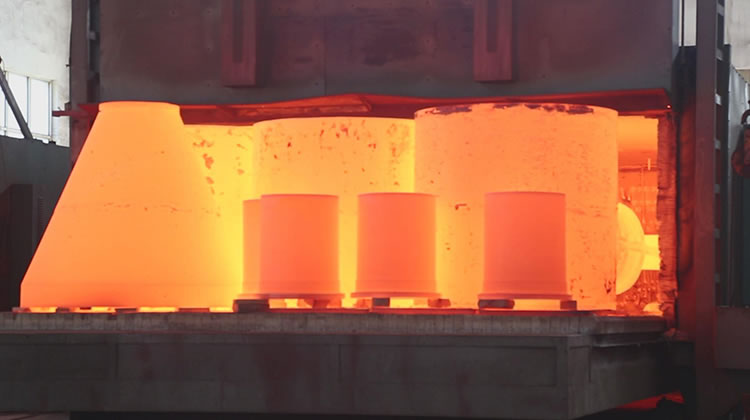 A full view of the heat treat furnace
A full view of the heat treat furnace 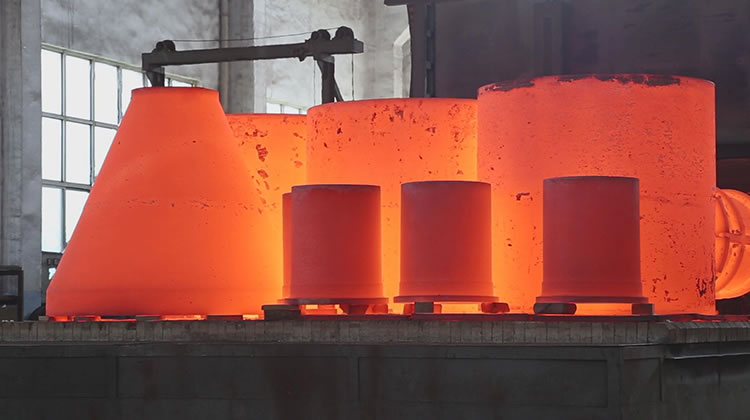 Our staff is ready to lift the component of our product.
Our staff is ready to lift the component of our product.
The major function of the heat treat furnace during production is to improve the machinability of our workpieces. Softening is a process used to decrease the hardness of workpieces. Hardening is a process used to increase the hardness of workpieces. Annealing is a process in which we can eliminate the internal stress of workpieces.
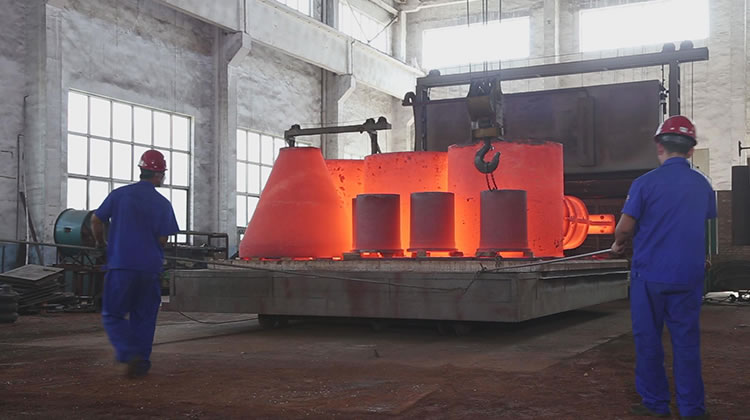 A close-up view of the component that was just taken out of the furnace
A close-up view of the component that was just taken out of the furnace 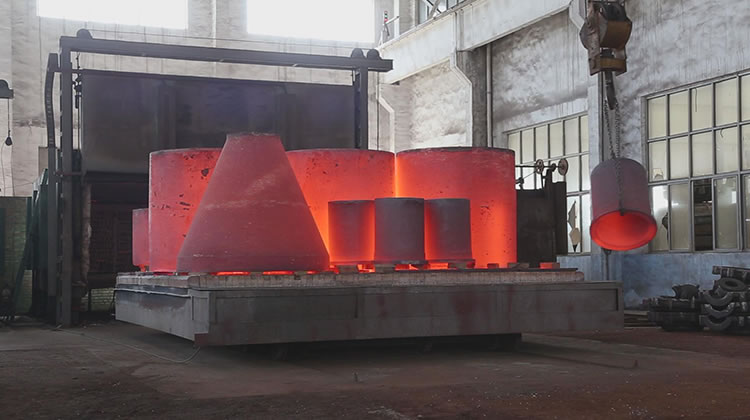 Lifting the component of our product
Lifting the component of our product
A full view of the assembly workshop
The assembly workshop occupies an area of approximately 3,500 square meters. It features a large operating space, where we assemble both large and small workpieces.
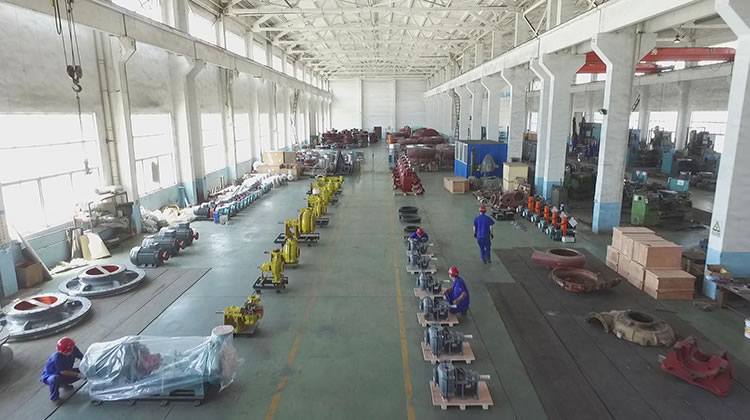 Assembly process
Assembly process 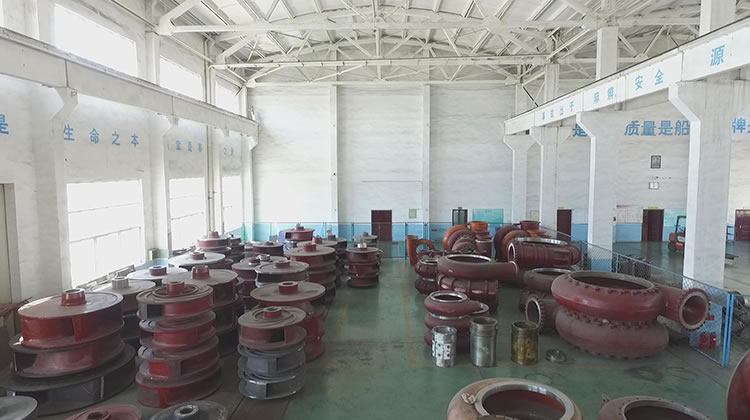 Finished products assembly area
Finished products assembly area
The single-column vertical lathe can handle all of the components which have a maximum diameter 1,600mm and a maximum height of 900mm. It operates with a precision of more than 0.04mm.
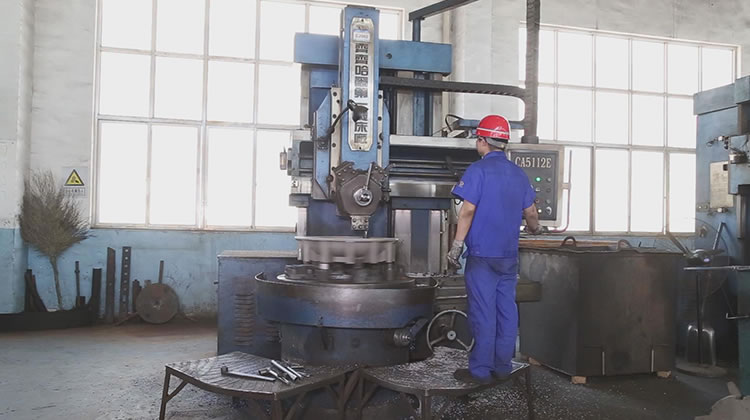 Single-column vertical lathe
Single-column vertical lathe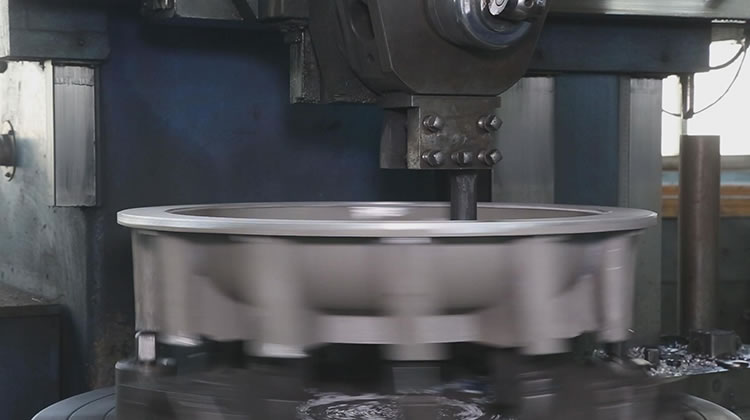 A close-up view of the single-column vertical lathe
A close-up view of the single-column vertical lathe
The digital-display floor type boring and milling machine is able to process flat surfaces with a stroke of less than 3,500mm. It can handle a component diameter of less than 1,400mm. Precision reaches up to 0.1mm. The load bearing capacity for components is less than 20 tons.
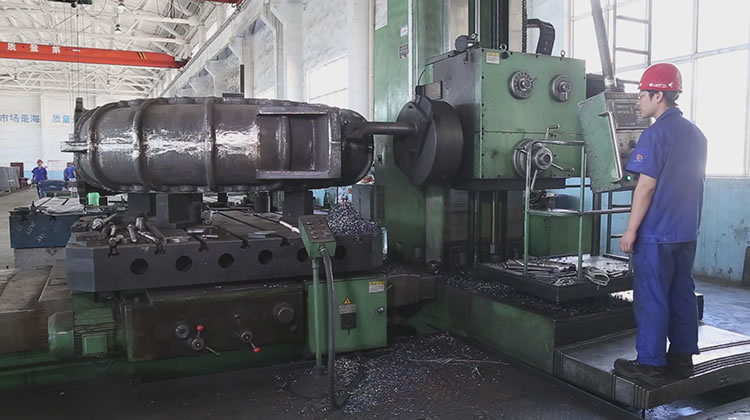 Digital-display floor type boring and milling machine
Digital-display floor type boring and milling machine 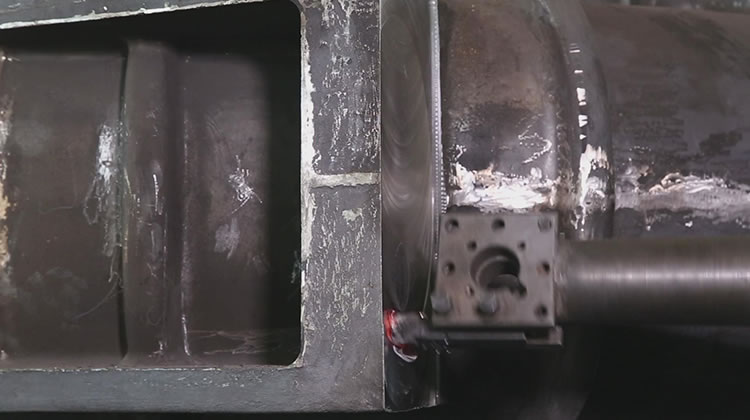 A close-up view of the digital-display floor type boring and milling machine
A close-up view of the digital-display floor type boring and milling machine
The horizontal lathe can work on all components which come in a maximum diameter of 630mm and a maximum height of 1,500mm. Precision exceeds 0.03mm.
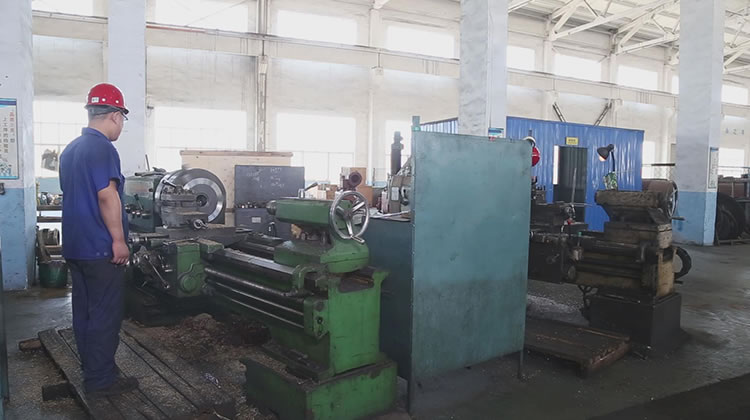 Horizontal lathe
Horizontal lathe 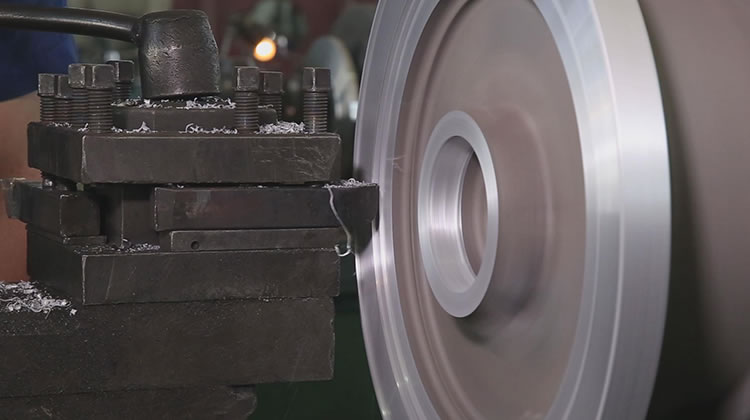 A close-up view of the horizontal lathe
A close-up view of the horizontal lathe
Pictured here is the dust-free rotor workshop. All of the bearings are assembled in a dust-free environment, which can ensure they operate smoothly and stably. The pass rate for rotor assembly is up to 100%.
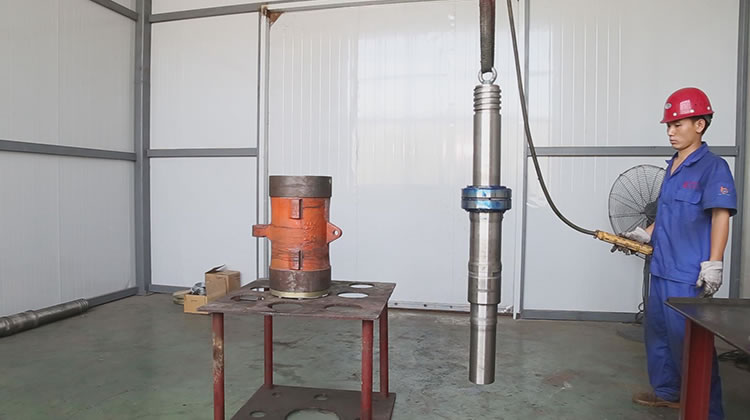 Dust-free rotor workshop
Dust-free rotor workshop 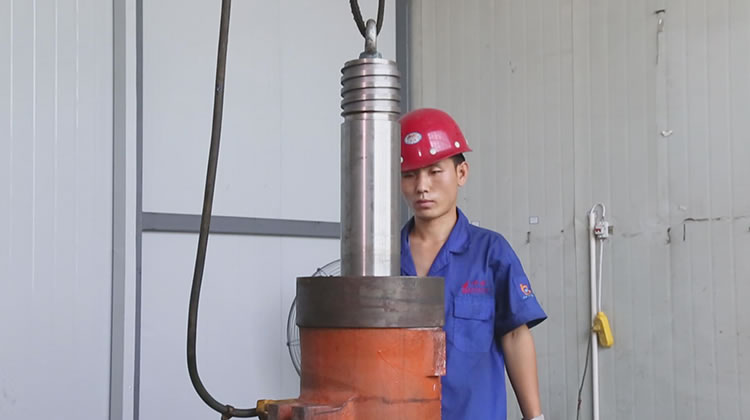 A close-up view of the dust-free rotor workshop
A close-up view of the dust-free rotor workshop
Double-column vertical lathe
The 5m and 6.3m double-column vertical lathe in our machining workshop can process the largest accessory of the dredge pump on the market today. It can handle the parts which have a diameter of less than 6,000mm and a height of less than 1,800mm. The load bearing capacity is less than 30 tons, and the processing accuracy reaches 0.1mm.
Suspension of large component
The assembly workshop is outfitted with a variety of lifting tools, e.g., one 20 tons bridge crane and two 5 tons bridge cranes, which can ensure the large and small workpieces are hoisted safely.
The assembled pumps have to be inspected and tested before packaging. Only qualified pumps are allowed to be packed into boxes. The assembly operator must verify the packing list during the packaging process, which can ensure the quantity of workpieces and product models are correct.
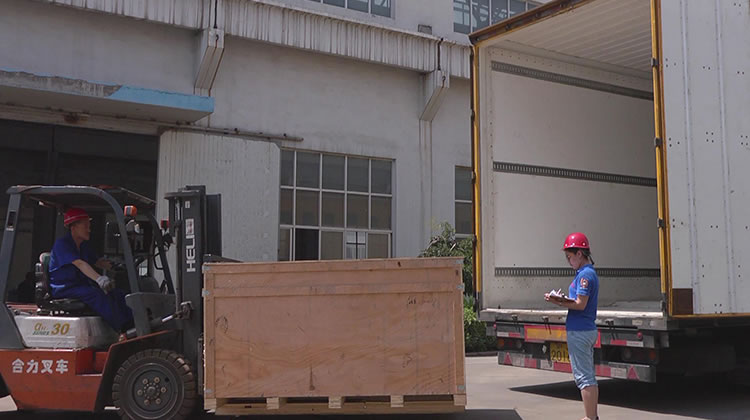 Identifying the registration prior to delivery
Identifying the registration prior to delivery
Our warehouse covers a total area of about 3,000 square meters. We maintain an ample inventory of pumps to shorten the delivery time dramatically.
We have specially assigned a person to perform physical inventory count. All of the outsourced materials have to pass quality assurance tests before being warehoused. All of the unqualified materials are rejected.
Our diverse range of materials which are taken out of the warehouse makes use of the first-in first-out method. When requesting for materials, all departments must provide the material requisition list accompanied by the signature from both manger and material handler. After the warehouse manager has checked the inventory and confirmed the product model, materials are allowed to be taken out.
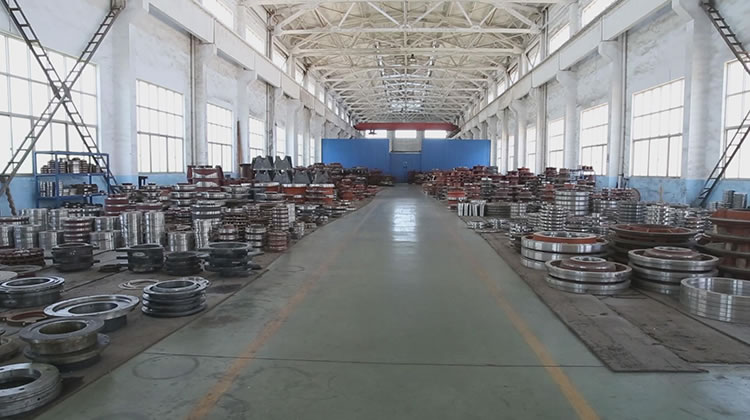 The warehouse of our general factory
The warehouse of our general factory 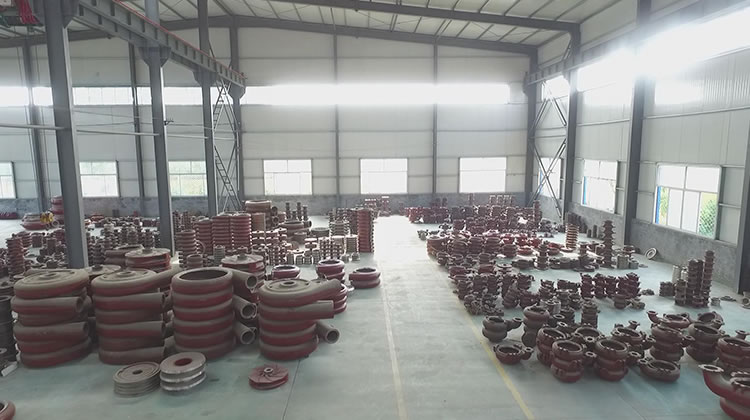 The warehouse of our branch factory
The warehouse of our branch factory
The main purpose of this test is to observe the composition of raw materials and related characteristics
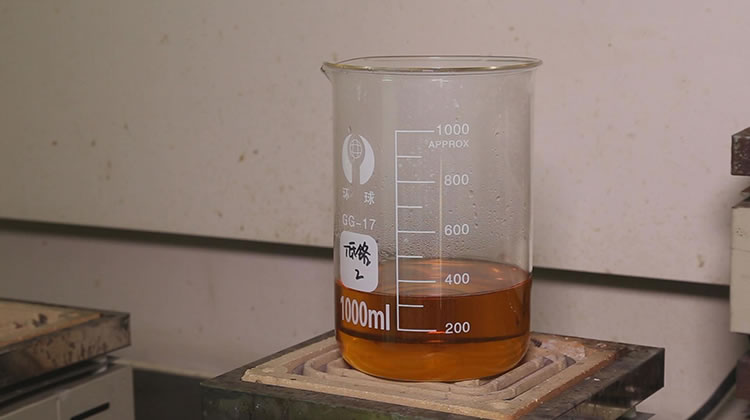 Manual inspection of high- and low-chromium raw materials
Manual inspection of high- and low-chromium raw materials
This equipment is mainly used to observe the internal structure of the specimen, thus enabling us to determine whether our product’s performance can meet the industry related requirement. For instance, we use this machine to measure the gray iron casting’s tensile strength, the ductile iron’s extensibility and the high-chromium cast iron’s abrasion resistance. We can also detect the potential product problems.
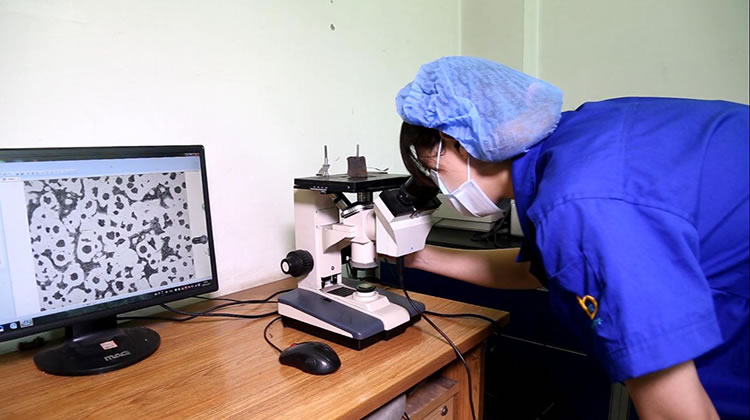 Metallographic testing
Metallographic testing
This machine can analyze the chemical component of the test specimen fast and accurately, thus ensuring the casting quality as well as the reduction of both production time and manufacturing cost. With the use of the most advanced material testing equipment – German direct-reading spectrometer with original packaging, we can make sure the proportions of materials fully meet customers’ requirements.
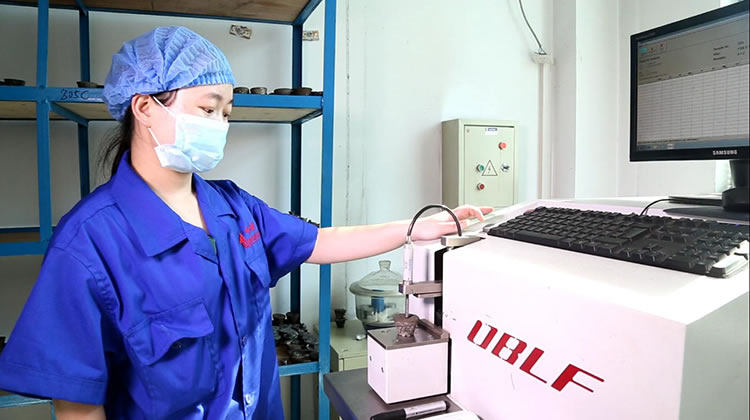 Spectrum detection
Spectrum detection
Our measuring tool can comply with the national standard. It performs testing at regular intervals, in order to prevent unqualified size of products resulting from inaccurate measurement. This can ensure our product size meets the requirement of the drawing.
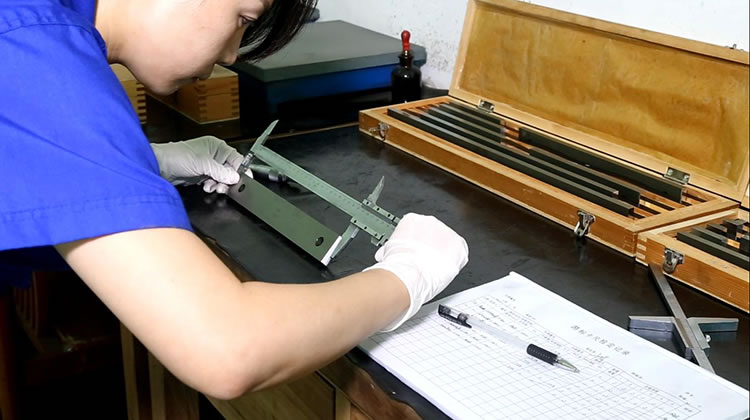 Measuring
Measuring
Here we use an advanced single-sided vertical balancing machine. Data is processed by an industrial control system. An LCD screen is used to display the amount of imbalance, phase angle and real-time speed, all of which can be measured dynamically, continuously and precisely. This can ensure the impeller of the finished product meets technical requirements, and thereby guarantee the lifespan of our product.
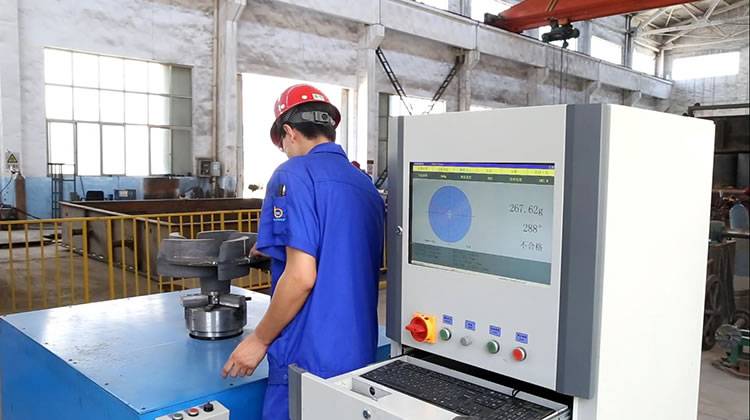 Single-sided microcomputer-controlled measuring system
Single-sided microcomputer-controlled measuring system
Ultrasonic testing is a process that uses ultrasonic waves to reflect from internal discontinuities in a test piece, thus ensuring the quality of products. The test piece can be a shaft, impeller, or other stuff.
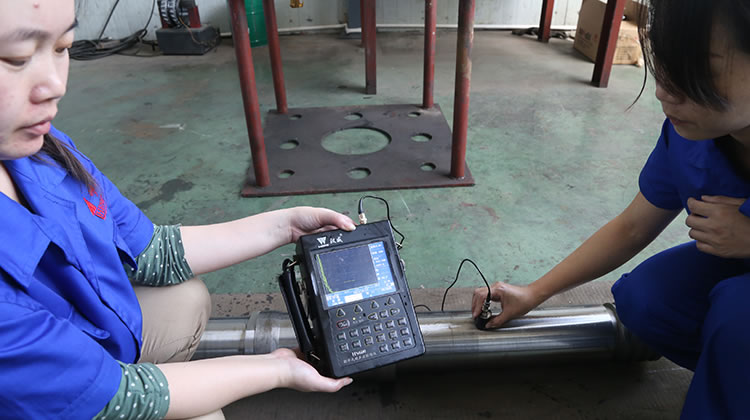 Ultrasonic flaw detection
Ultrasonic flaw detection
The assembly workshop is equipped with China’s most advanced, fully automatic pump testing station. Curves are automatically generated under the control of a computer. The use of best-in-class production line can ensure our products possess consistent quality. The PMS water pump testing system can automatically test the performance of motors as well as the cavitation and performance of various pumps. The computer-aided water pump testing machine can carry out both the type test and pre-delivery inspection. Simultaneously it can automatically complete the performance curve and test report. In addition it can conduct research on various characteristic tests, such as vibration test, cavitation test and so forth. By using this system, we can test the performance of a diverse range of pumps in a more systemic, comprehensive and accurate manner. This can ensure every pump can meet the industry related standard.
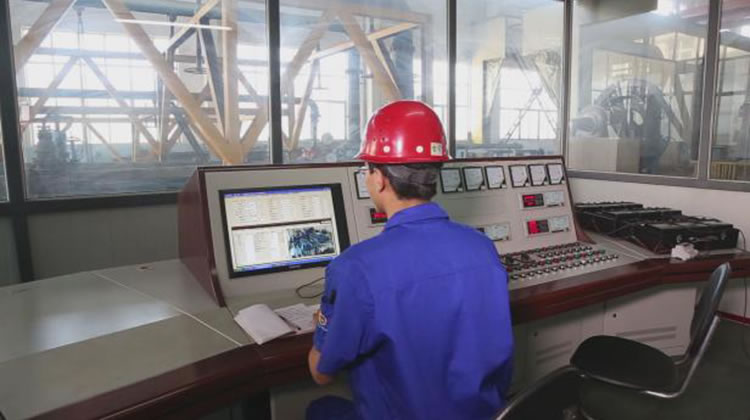 Pump testing station
Pump testing station 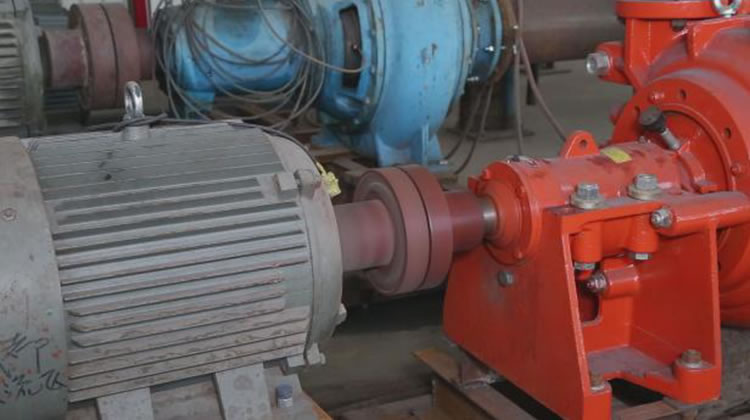 Pump testing station
Pump testing station
Before being allowed to leave our factory, the bearing needs to undergo a no-load heat run test. The adoption of advanced thermometer and vibration tester can ensure every bearing delivers a high level of reliability, thus providing a reliable guarantee on the quality of products.
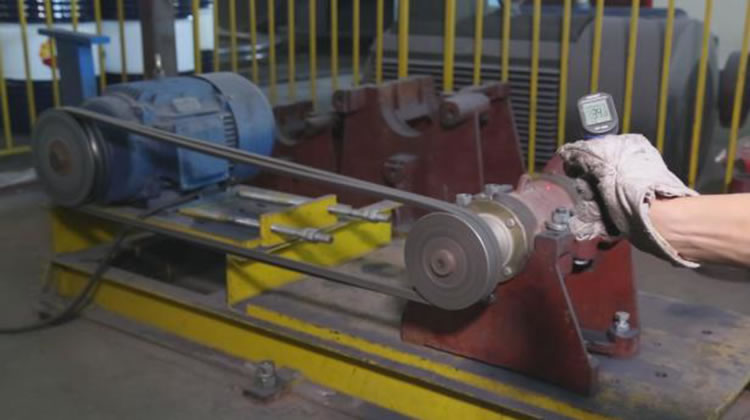 Heat run test
Heat run test
Hardness is a basic physical property which may reflect the quality of products. Hardness tests are employed for testing the compression strength and abrasion resistance of the casting product, which can ensure all properties of products meet customers’ requirements.
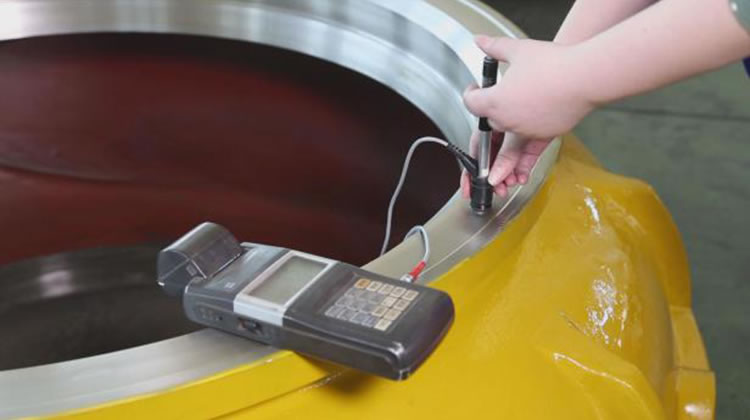 Hardness testing
Hardness testing
Shijiazhuang Industrial Pump Co., Ltd.
Add.: No.41 Xingye Street, Shijiazhuang Economic and Technological Development Zone, Hebei Province, China
Tel.: +86-311-89299123
Fax: +86-311-89299008
Email: sales07@zrpump.com


